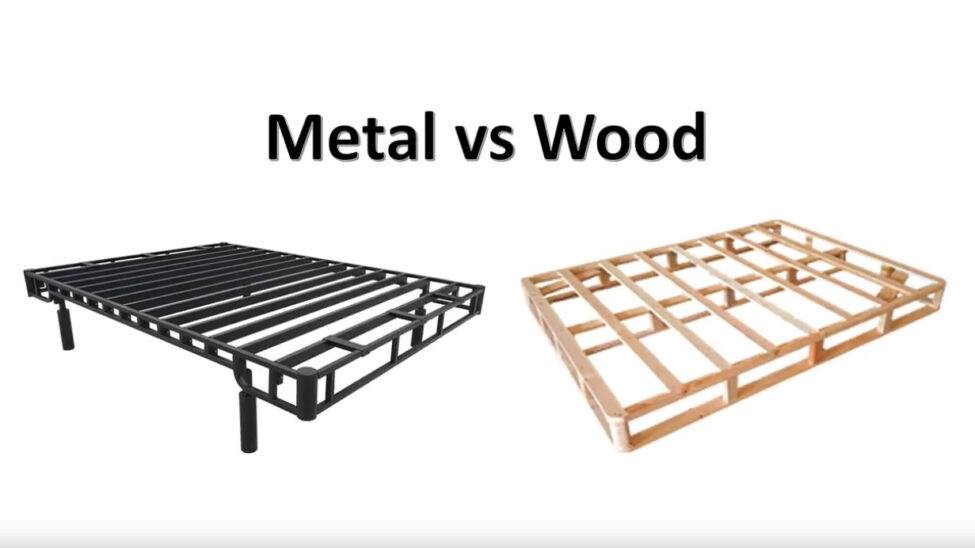
Everyday Life in the Nursery: More Than Just a Design Choice
When parents ask me what crib they should choose—wood or metal—I always say: think beyond the look. Sure, nursery aesthetics matter (especially when you’ve spent hours scrolling Pinterest), but this isn’t just décor. Your baby’s crib is where so many memories are born: quiet lullabies in the dark, sleepy snuggles at 2 a.m., those incredible first full nights of sleep.
With my first daughter, we chose a vintage-style metal crib because, honestly, it was stunning. But it also had this tiny, consistent squeak. Every time I leaned in or shifted my weight, it would creak just enough to wake her—or me. That tiny detail became a big deal in our daily rhythm. These seemingly small things can shape your experience in ways you don’t expect.
Think beyond design. Crib material affects everything from daily maintenance to your baby’s sleep environment.
The Classic Comfort of Wooden Cribs
There’s a reason wooden cribs have remained a favorite for generations. They feel warm, solid, and somehow just… dependable. Whether it’s a natural pine finish or a sleek white design, wood brings a sense of calm and coziness that many parents crave during those early months of chaos.
Many wood cribs are built to last, and some even grow with your child—transforming into toddler beds or full-size beds. It can feel like an investment, but one that pays off over time. The sturdiness of wood is especially noticeable when your baby starts pulling up, bouncing, or testing out their new standing skills.
That said, wooden cribs do have their quirks. They’re often heavier, which can make rearranging the room a bit of a workout. And if you’ve got a teething baby (been there!), don’t be surprised to find tiny teeth marks along the rails. Choosing cribs with non-toxic finishes becomes crucial.
If your baby’s crib doubles as a teething toy, go for solid, non-toxic finishes. Trust me—I’ve seen those little teeth go to town on crib rails.
Metal Cribs: Light, Stylish, and Surprisingly Practical
Metal cribs have made a major comeback in the last few years—and it’s not hard to see why. They tend to have a clean, airy look that works beautifully in both modern and vintage-inspired nurseries. If you love soft golds, matte blacks, or minimalist silhouettes, metal might just win you over.
Functionally, metal cribs are often lighter and easier to move around. That can be a huge bonus if your baby sleeps in different rooms or if you’re trying to squeeze a crib into a smaller space. I once worked with a family in a loft apartment who needed a compact, stylish crib that didn’t overwhelm their living area. A slim-profile metal crib did the trick—without compromising comfort or safety.
But while metal cribs look sleek, they can feel a little colder—literally and emotionally. Some parents describe them as “less cozy” than wood. And depending on the design, not all metal cribs convert as easily into toddler beds. Also, pay attention to the quality of welds and the finish—sharp edges or chipping paint are absolute no-gos.
What looks chic in the showroom should also feel safe and sound in the middle of the night when you’re reaching in half-asleep.
What Really Matters: Safety, Comfort, and Practicality
Let’s be real—whether it’s wood or metal, your crib’s first job is to be safe. Make sure it meets all modern safety standards. Slats should be the right distance apart, the mattress should fit snugly, and the whole frame should feel solid with zero wobble. No decorative flair is worth compromising on that.
Think about how the crib will work in your day-to-day life. Do you need to move it between rooms? Then lightweight might matter more. Do you want a crib that will turn into a toddler bed down the line? That might steer you toward a solid wooden model. Also consider how often you’ll be cleaning it, and how easy it is to assemble (or disassemble at grandma’s).
We actually ended up using both types. Our son had a classic wood crib in his room—a convertible one that became his toddler bed later. For the nursery corner in our guest room, we used a lightweight metal crib. Both suited their spaces perfectly. There’s no universal answer, but there is a best answer for your life right now.
Choose the crib that fits your life, not just your nursery mood board.
So, Which Crib Should You Choose?
The truth? Either option can be a great choice. It all depends on your space, your budget, your style, and how you want to use the crib over time. Don’t worry too much about getting it “perfect”—worry about what feels manageable and sustainable for your family.
If you find yourself hesitating, that’s okay. It means you care. And caring parents make the best choices, even when it’s just about crib material. So go with the one that makes your life easier, your nights quieter, and your baby’s sleep safer.
What your baby needs most is you—rested, confident, and surrounded by a space that works for your whole family.


